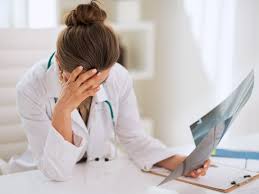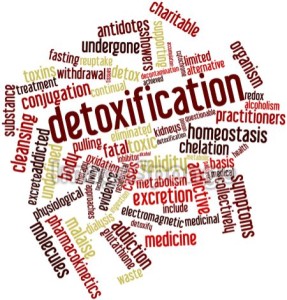The Prevalence of Depression in Cancer Patients
The Prevalence of Depression in Cancer Patients: Depression and Cancer

The Prevalence of Depression in Cancer Patients is the concern of everybody. Even the medics are victims of the two health conditions
The impact of depression in cancer patients has of late been receiving much attention. This is because of the health risks that are involved when the two conditions marry together in an individuals’ life. It is no wonder that depression is actually seen as the psychiatric syndrome that has received the most attention in persons struggling with cancer. Nonetheless the study of depression has equally had a host of challenges due to the symptoms that associates with it on a broad spectrum that ranges from sadness to major effective disorder. The prevalence of depression in cancer patients is further put to test because of the changes in moods are often very difficult to evaluate more so when the patients in question is also receiving treatment of cancer and continuous threats of stress, fatigue and the pain they experience.
Doctor Akoury agrees that even though many research groups have assessed depression in cancer patients for several decades in the past, the reported prevalence varies significantly because of varying conceptualizations of depression, and in fact the definition of depression is not standard and different principles use for the definition of depression. Some of the differences may include the methodological approaches to the measurement of depression, and even the different populations studied. Depression is highly associated with oropharyngeal, pancreatic, breast, and lung cancers. A less high prevalence of depression is reported in patients with other cancers, such as colon, gynecological, and lymphoma. In this discussion we are going to make certain reviews on the prevalence of depression in cancer patients even as we desire to get the perfect links between the two health conditions.
Depression affects 121 million people and is among the leading causes of disability worldwide. If not treated in time depression can lead to personal suffering and increased mortality. Although the prevalence of depression varies considerably globally, the most common symptoms of depression may include:
- Depressed mood
- Insomnia and
- Fatigue
Looking at gender, women are the most vulnerable to be depressed than men. Even though the available estimates shows that major depression are common with people in their late twenties, research findings puts children also at risk where in every ten children, one will have periodic feelings of sadness. This has been seen as one of the greatest indicators of depression says doctor Dalal Akoury. Experts also put the prevalence of depression in pre-pubertal children ranges from 1% to 3% and from 3% to 9% in adolescents; however, the lifetime prevalence through adolescence is estimated to be as high as 20%. Although there is no difference in the prevalence rate between sexes before puberty, females are at higher risk after puberty. Depression in children negatively affects a child’s development and often manifests as behavioral problems or somatic complaints.
The Prevalence of Depression in Cancer Patients: The Coexistence of Depression
Depression is not alone ranger and it is commonly coexisting with other syndromes and symptoms, like for instance the anxiety disorders posttraumatic stress disorder, panic disorder, generalized anxiety disorder and pain. The National Comorbidity Survey data show that in a 12-month period, 51% of patients with major depressive disorders are diagnosed with an additional anxiety disorder. Patients with comorbid depression and anxiety disorders experience more severe symptoms, have a longer time to recovery, use more healthcare resources, and have poorer outcome than do those with a single disorder.
The symptoms of depression and personal suffering resulting from this disorder have been well described. The complex biological underpinnings result from disturbances in neurotransmitters and hypothalamic-pituitary-gonadal axis dis-regulation. The last two decades have produced exciting science and advances in the understanding of the neurobiology and pathophysiology of depression. Electro-physiologic studies, neuroimaging techniques i.e., magnetic resonance imaging; computed tomography; single photon emission computed tomography; positron emission tomography; functional magnetic resonance imaging and neuropsychological studies are providing information about the neuroanatomical substrate of depression as we are learning more about how systemic disease effects vulnerability to depression.
The Prevalence of Depression in Cancer Patients: Early Studies of Depression in Cancer Patients
When a significant number of mental health professionals began working in oncology settings, they asked oncologists to describe their perceptions of the prevalence of psychiatric disorders in cancer patients. They were able to find common responses ranging from “everyone is depressed which is very true because they have cancer” to “no one is depressed; these are just normal people” and likely were a reflection of the respondent’s mood and coping style.
One of the first efforts in psycho-oncology was to obtain objective data on the type and frequency of psychological problems in cancer patients. Using criteria from the Diagnostic and Statistical Manual of Mental Disorders–Third Edition (DSM-III) classification of psychiatric disorders, the Psychosocial Collaborative Oncology Group determined the psychiatric disorders in 215 randomly selected hospitalized and ambulatory adult cancer patients in three cancer centers by structured clinical interview. Although 53% of the patients evaluated were adjusting normally to stress, the remainder (47%) had clinically apparently psychiatric disorders. Of this 47% with psychiatric disorders, more than two-thirds had adjustment disorders with depressed or anxious mood, 13% had a major depression, 8% had an organic mental disorder, 7% had a personality disorder and 4% had a preexisting anxiety disorder. The authors concluded that nearly 90% of the psychiatric disorders observed were reactions to or manifestations of disease or treatment. Personality and anxiety disorders can complicate cancer treatment and were described as antecedent to the cancer diagnosis. The finding of 4% anxiety disorders was far below what would have been expected in the general population.
Thirty-nine percent of those who received a psychiatric diagnosis experienced significant pain. In contrast, only 19% of patients who did not receive a psychiatric diagnosis had significant pain. The psychiatric diagnosis of the patients with pain was predominately adjustment disorder with depressed or mixed mood (69%), but of note, 15% of patients with significant pain had symptoms of a major depression. Finally in whichever way you look at depression and cancer, these two conditions put together in an individual’s live can be very dangerous. We must therefore do all within our reach to keep distance from all these complications. One of the most important things you must keep in mind is the consistent consultation with the experts for professional advice. Doctor Akoury and her team of experts at AWAREmed Health and Wellness Resource Center will handle your situation with great confidentiality and most importantly offer you lasting solutions professionally. Your health should come first and therefore, schedule for that appointment today.
The Prevalence of Depression in Cancer Patients: Depression and Cancer




